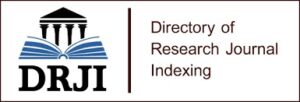EFFECTS OF RIVER DUMPING ON FISH BIODIVERSITY AND WATER QUALITY: A CRITICAL REVIEW
A lot of people do not know that, it is their day-to-day waste dumping activities that results to river dumping, such as household, urbanization, agriculture, industrialization and behaviour of waste management in the ecosystem. It is obvious that dumping of waste (liquid and solids) on land will find its way to the ocean through wind action and water runoff via gutters, streams, creeks, lakes, lagoons, rivers, all leading to the ocean as final dumping zone. The river system is being polluted due to inadvertent plastic dumping along the river. Consequently, the water quality is deteriorating day by day, which impacts fish diversity and other aquatic resources. Anthropogenic activities including wastewater disposal have nearly doubled inputs into the global cycle. Manmade activities have the potential to make an impact on the water quality of an aquatic ecosystem, depending on the water body, disturbance of the aquatic ecosystem may lead to changes in its parameters such as biological, chemical, and physical composition of the water. The high amount of refuse deposition on the river floor might be a potential threat that decreases river depth and may cause massive floods during the rainy season. The massive dumping of macro-plastics has also compromised the quality of consumable fish and aquatic organisms as well as the water purity of the river, continuing this practice in the aquatic systems would be a serious threat to its ecosystem components and be responsible for the spreading of vast micro-plastic sources through the coastal ecosystem. Hence, there is an urgent need to raise awareness among the common people regarding the fate and consequences of river dumping pollution. Every individual should be conscious of waste handling and management. Additionally, policymakers should focus on developing appropriate rules and regulations suitable for a country and its citizens. Finally, enforcement of laws in a proper way is required to reduce the severity of pollution in freshwater ecosystems which are the most affected by human waste pollutions.
KEYWORDS: Threatened Biodiversity, Aquatic Pollution, Bioaccumulation, Waste Management, Ocean Littering




















